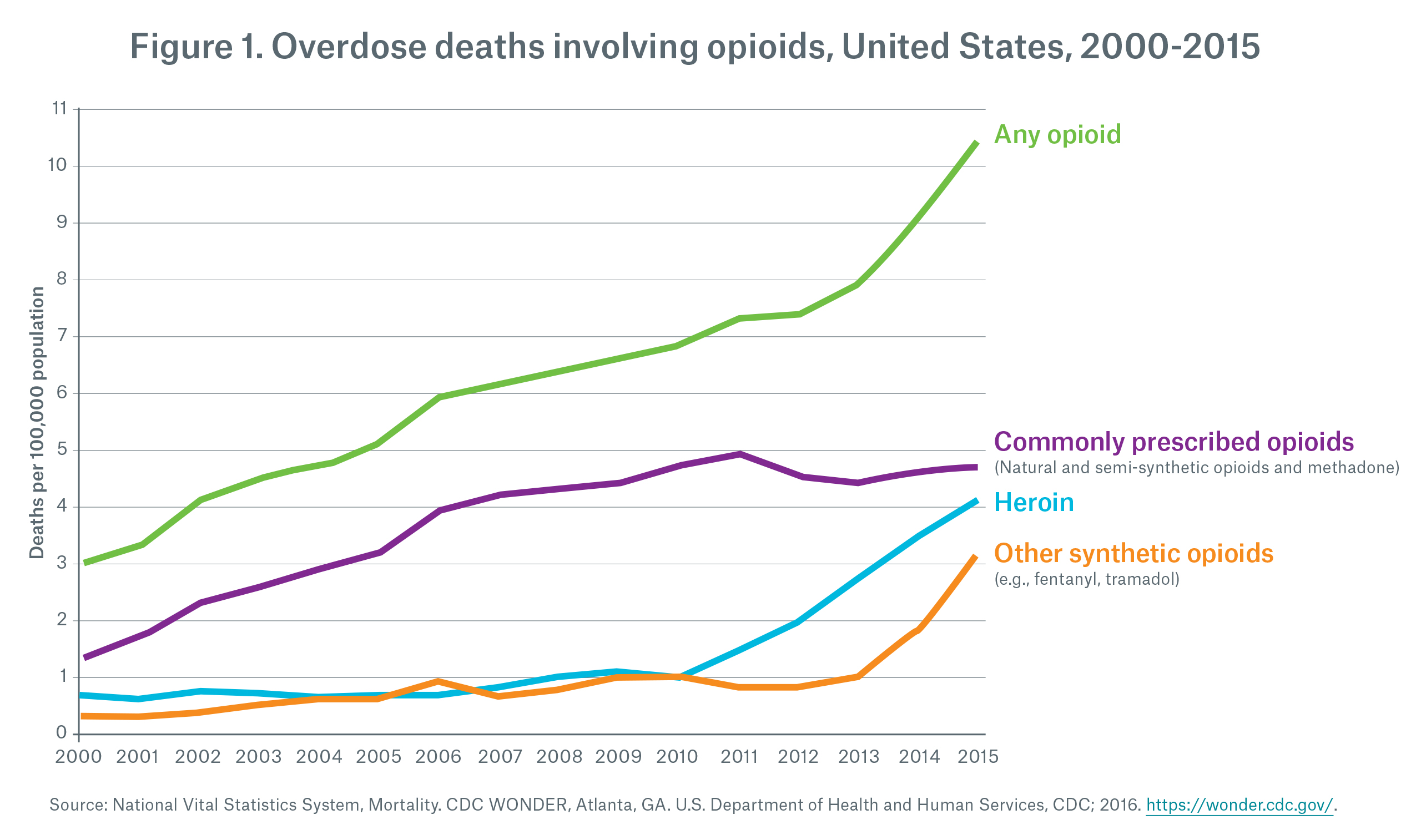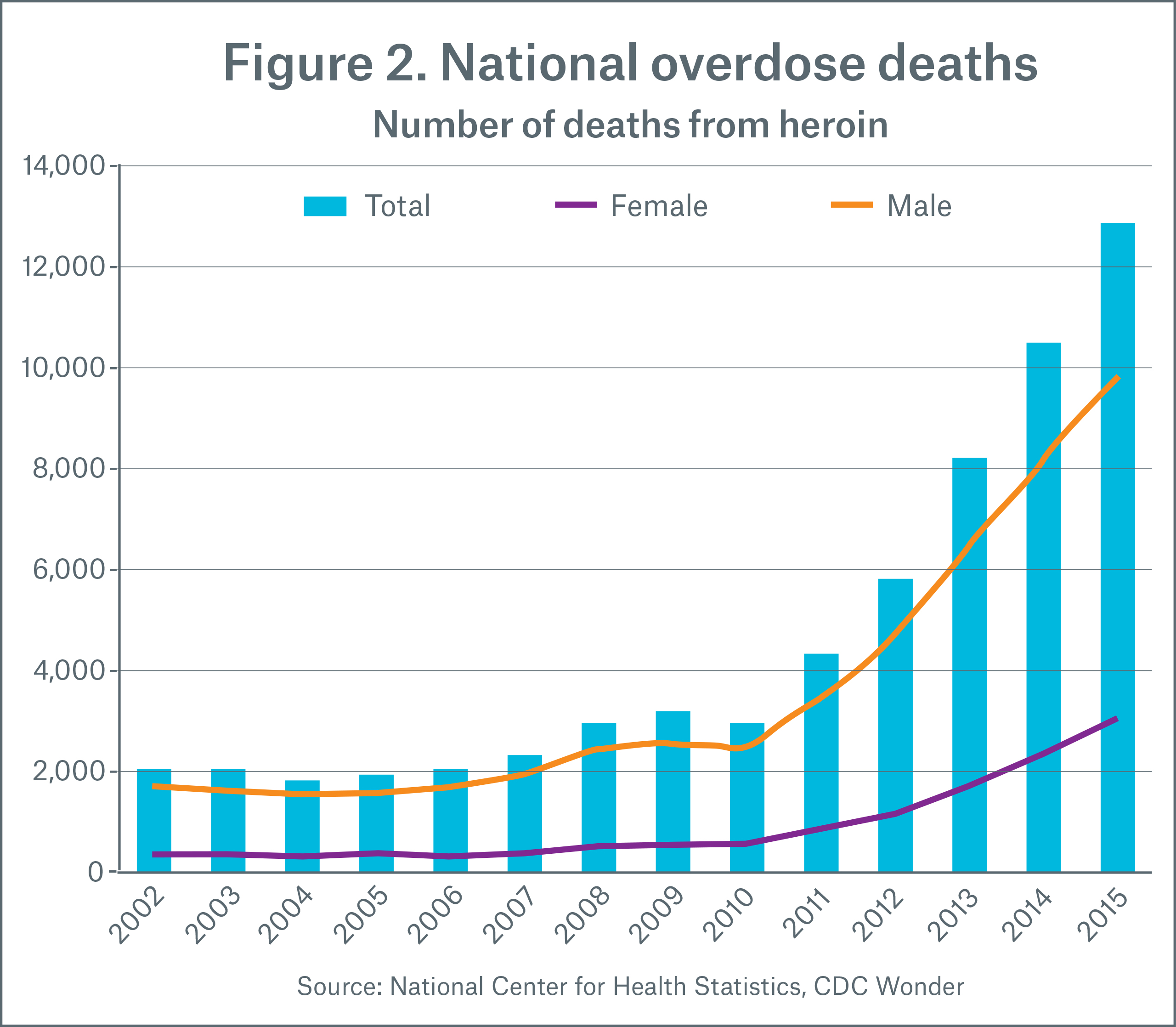
Janis Joplin, Phillip Seymour Hoffman, John Belushi, Jim Morrison, Chris Farley — just a few of the many prominent artists whose lives and careers have been cut short by a heroin overdose. Currently heroin, cocaine, marijuana, prescription medications — specifically prescription opioids — and alcohol are recognized as the chief forms of substance abuse in our society. In this white paper, we continue our series examining the opioid epidemic and its significance for the life insurance industry.
Heroin, which the FDA classes as a Schedule 1 drug, is an illegal opioid that is derived from morphine and was originally synthesized in the late 19th century. It gets its name from the German word “heroisch,” which in English means heroic. Heroin was initially used in the treatment of morphine addiction and as a cough suppressant and a cure-all for various ailments. The distribution and sale of heroin was unregulated in the U.S. until 1914, when the Harrison Narcotics Act stipulated that it had to be obtained from a doctor. In 1924 the drug was totally outlawed, even for medicinal purposes, as a result of the Anti-Heroin Act. Heroin use declined in the late 1920s, due to international regula-tions making the drug illegal and a resultant decrease in its production. There was a resurgence of heroin use tied to the Vietnam War when nearly 20 percent of U.S. servicemen identified themselves as heroin addicts.
Heroin is usually found in the form of a white or brown powder or a sticky black substance referred to as black tar heroin. It may be injected, sniffed or smoked, and often is mixed with crack cocaine. Heroin production is most often identified with Southeast and Southwest Asia, Colombia and Mexico.
Heroin, like prescription opioid pain-killers (OxyContin, Vicodin and others), is highly addictive and has similar effects upon the brain. It binds with mu-opioid receptors, which control pain, feelings of well-being, and the release of hormones, as well as controlling heart rate, sleeping and breathing. Our bodies contain natural neurotransmitters that bind to these receptors. For example, the release of one neurotransmitter, dopamine, results in a sense of pleasure.
The introduction of external opioids, such as heroin, can have a dramatic, sometimes fatal, impact upon the individual. The resultant effect is tied to the amount of opioid used, where and how quickly it binds, how strongly and for how long, and what happens once it binds.
Heroin use is dangerous in and of itself due to its immediate life-threatening properties related to a reduction in both breathing and heart rate. It also exposes an individual to a number of other potentially fatal infections, such as HIV, hepatitis B or C, and other opportunistic infections, through sharing contaminated syringes and other drug delivery paraphernalia, or other risky behaviors. Heroin-related deaths are increasing. Heroin is mixed or contaminated with other drugs, such as fentanyl, making for a much more lethal drug cocktail. It should be noted that a large number of heroin users are also depressed, which is not an uncommon feature in substance abuse disorders. While most heroin-related deaths are unintentional, a number are suicides.
Heroin use in the U.S.
Opioid use and abuse in the U.S. is at an all-time high and is mirrored by heroin use. When compared to the general population, heroin users comprise a small percentage of Americans: while it is difficult to provide an exact number of current heroin users, according to the National Survey on Drug Use and Health, in 2012 approximately 669,000 Americans had used heroin within the year, with first time users accounting for about 156,000 of this group. The number of probable first time users had increased dramatically from the 2006 estimate of 90,000. In 2012, it was also estimated that about 467,000 Americans met the then-published Diagnostic and Statistical Manual (DSM) criteria for heroin dependence or abuse, up from 214,000 in 2002. A more recent study from the United Nations’ World Drug Report 2016 estimated that U.S. heroin users numbered one million in 2014.
According to data from the Centers for Disease Control (CDC), overdose deaths involving opioids in the United States continue to skyrocket (Figure 1) with opioid overdoses quadrupling since 1999. While prescription opioids still account for a majority of these deaths, the rapid rise in mortality seen over the past few years is mainly driven by a rapid rise in death due to heroin and other synthetic opioids such as fentanyl. Heroin deaths increased from about 2,000 in 2002 to about 12,000 in 2015, an increase of over six times (Figure 2). These numbers may not truly represent the extent of either the opioid epidemic or related heroin use and abuse due to under-reporting or misreporting the exact cause of death. Nonetheless, the increasing levels of use and abuse and the resultant deaths are alarming.


Who is a typical heroin user?
The demographics of heroin use are changing. Heroin use has traditionally been highest among males, people between the ages of 18 and 25, those with annual household incomes of less than $20,000, individuals living in urban areas, and persons without health insurance. However, increasing use has been noted among women and non-Hispanic whites with rates at least doubling between 2002 and 2015. Its use has spread out of the inner city to the suburbs and rural areas. The income and insurance demographics are changing as well, to include higher income levels and more users with some form of health coverage. Virtually all heroin users report other drug use or abuse, be it alcohol, marijuana or cocaine.
Heroin and the opioid epidemic
Is heroin use related to the opioid epidemic? In a word, “yes,” however, not all heroin users started by using other opioids. Some are heroin users due to innate behavioral and risk-taking characteristics. Certainly, the over-prescription and increasing availability of opioids are factors related to heroin use. It should be noted that those using opioids — whether obtained legally or illegally — for “non-medical” reasons, are more likely to be or become heroin users. Changes in prescribing practices as well as the manufacture of the drugs themselves (to make them more difficult to cut or crush) have made obtaining prescription opioids more difficult and led to more widespread heroin use. Individuals who are addicted to opioids will pursue the easiest means to fulfill their need: heroin is readily available from multiple sources and relatively cheaper than other opioids.
There is no concrete indication that the opioid epidemic is waning. The cost in individual lives and to society warrants greater vigilance on our part to recognize those at risk and also the need to provide them with effective forms of treatment for their substance abuse. In a subsequent paper we will examine alternative therapies for pain management and their potential to affect the opioid epidemic.
Contact
/Gina%20Guzman.jpg/_jcr_content/renditions/original./Gina%20Guzman.jpg)
Newsletter
properties.trackTitle
properties.trackSubtitle